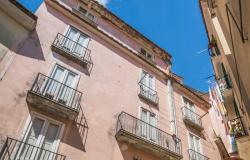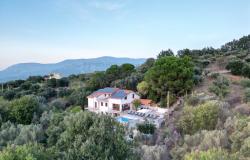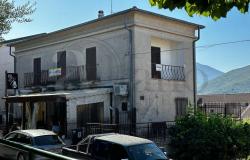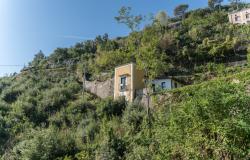Story by Denis Greenan
 A Japanese pizza-maker beat the best of Naples to claim the title of world's top pizzaiolo for the second time in three years. Makoto Onishi, 31, a master chef who learned the art of true pizza on the island of Ischia in the Bay of Naples, outperformed pizzaioli from 24 pizzerias - most of them here in the home of pizza.
A Japanese pizza-maker beat the best of Naples to claim the title of world's top pizzaiolo for the second time in three years. Makoto Onishi, 31, a master chef who learned the art of true pizza on the island of Ischia in the Bay of Naples, outperformed pizzaioli from 24 pizzerias - most of them here in the home of pizza.
In a three-hour tasting at Naples' annual Pizzafest, a jury composed of experts and journalists judged Onishi's work to be the perfect incarnation of "real Neapolitan pizza."
Onishi brings a touch of Zen to the art of pizza-making.
"To make a good pizza, the chef must be free of stress," he explains.
The young man from Japan came to Italy in 2002, looking for a job in a pizza restaurant. He says fate took him to the Da Gaetano pizzeria on
Ischia, without knowing he would meet his master there. "I arrived at Naples station and a guy who turned out to be a doctor gave me three euros, saying 'get yourself some pizza.' He must have thought I was some kind of bum".
"Then I ran into him again and I asked him where I could learn how to make a good pizza. He told me, 'Head for Ischia'".
Onishi proved to be a fast learner. Under Gaetano Fazio's tutelage, he quickly outgrew the homegrown talent at Ischia's famous eatery, which put him up for the 2003 Pizzafest contest. To widespread amazement, he won. Onishi became a Japanese media celebrity and was snapped up by a popular Neapolitan pizzeria in Tokyo, run by Naples native Salvatore Cuomo.
"He's a true artist, and as hard-working and dedicated as the day I hired him," Cuomo says. His teacher Fazio says: "Onishi is a great lad. He's
just as humble as the day he knocked on my door".
In the Pizzafest competition, contestants are free to be inventive with their creations as long as they stick to the traditional ingredients. This year's winner can flaunt the title of Neapolitan Pizzaiolo 2006 and the recipe for his award-winning creation will be reproduced in other pizzarias under the name Pizzafest 2006.
Pizza-makers and lovers from all over the world, including Neapolitans who have rolled dough into big money in the United States, Australia and Japan, have turned up for the annual festival. Each year, Pizzafest turns out hundreds of pizzas made by pizzaioli from all over the world.
The only qualification is that they must comply with guidelines laid down by the city's Real Neapolitan Pizza Association.
PIZZA 'AS IT SHOULD BE MADE'.
The event, now in its eleventh year, draws thousands of locals and tourists to sample pizza "as it should be made" in its "spiritual home". This year it has lined up an even more scrumptious menu of attractions, including a bigger-than-ever exhibit on the history of Naples' most famous export.
Association President Antonio Pace says the body has no objection to pizzas being made around the world, "as long as they respect the rules".
"But to know if a pizza tastes as it should, it's better to try it at least once in Naples so you can compare it with those being produced elsewhere," he added. According to the association, there are 200 certified 'Verace Pizza Napoletana' True Naples Pizza pizzerias around the world, 10 of them in Japan.
After more than a decade of success in Naples, Pizzafest successfully emigrated to Brussels in 2003 and similar events are planned in Paris and other European capitals. Pace's association insists that only ingredients from the region of Campania should be used and stresses that pizza should be made in the traditional way - in a brick oven using bona fide ingredients like local mozzarella and tomato sauce. The organization spearheaded a successful campaign to win a special European Union "traditional speciality guaranteed" (TSG) label for Neapolitan pizza.
Rather than referring to the origin of the product, TSGs highlight its traditional character, either in the composition or means of production.
POOR DISH RISES TO ROYAL APPROVAL.
Although baked dough topped with various ingredients has been eaten round the world for centuries, it was only in the 1700s, after the tomato became an established part of Italian diets, that pizza in its current form really took off.
It was particularly popular in poorer quarters of Naples where the cheap, readily available ingredients made it a staple part of the local diet.
Until the mid-1800s, the pizza-maker would prepare his wares in advance and wander parts of the city advertising his arrival by calling out loud.
Then gradually, people began visiting the pizzaiolo's premises to enjoy the product fresh from the oven and the first pizzeria was born.
News of the city's celebrated pizzas eventually reached the ears of the newly created royal family in 1889. During a stay in Naples' Capodimonte Palace King Umberto I and his wife Queen Margherita summoned a much-talked about local pizzaiolo to the palace to sample his creations.
Raffaele Esposito and his wife Maria Brandi prepared a variety of different pizzas for the royal couple, but the queen's favorite was one topped with tomato, mozzarella and basil.
In recognition of the honor bestowed on him, Esposito, whose descendants still run the Brandi Pizzeria in Naples today, named the pizza after the queen.







